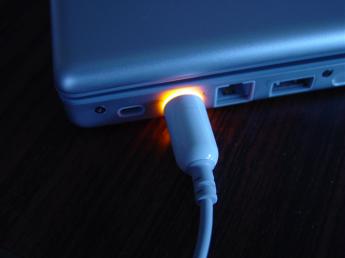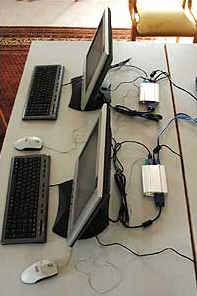Cost-Effective Alternatives To Expensive PCs May Help Bridge The Digital Divide
In some developing coutries, a computer costs the equivalent of a house. This is a major factor causing and perpetuating the 'digital divide' - the socio-economic gap between countries and communities that have access to computers and the Internet and those who do not.

Photo credit: Buffy Davis
The Internet and Information and Communications Technologies (ICTs) have the power to transform society, to improve communication and understanding, narrow power differentials, even to realize a democratic society. They can be used to enhance international trade, build online digital libraries, foster online education, expand tele-medicine, introduce e-government and countless other applications that solve vital problems in the developing world.
Recent developments in WiMAX technology may offer developing countries the ability in the future to provide low-cost, universal broadband Internet access to their population, but if the cost of the needed hardware remains prohibitive, this will make little difference.
However, the very real possib
A recent article on the BBC News Web site, entitled "Small box 'to end digital divide'" describes how Ndiyo, a Cambridge UK based not-for-profit project, has teamed up with another Cambridge organization, Newnham Research, to co-develop Nivo (Network In, Video Out).

Ndiyo has developed the 'Ndiyo system', which it describes as:
"a server PC, running Open Source software, driving a cluster of ultra-thin-client workstations. We've developed a particular solution, using the Ubuntu Linux operating system and the new nivo hardware that we have developed with our partner Newnham Research, that provides a solution that is cheaper than any existing way of providing networked computer workstations, while providing good performance and high usability for typical office or communications use."
Newnham Research's Nivo harware is an ultra-cheap, ultra-thin client, in effect a networked computer workstation for something closer to the cost of a VGA cable than that of a PC. This, combined with open source software, means very low cost hardware and software.
Combining the Nivo hardware with the open-source software on an Ndiyo server provides a "robust, affordable and more sustainable way of providing a group of networked workstations".
Desktop machines with which we are familiar, are inflexible, and power-hungry, according to Ndiyo.
The raw materials used for a PC are 11 to 12 times the weight of the machine, Ndiyo's Dr Seb Wills explains.
Typical office workstation set-ups also use more power than thin clienting. A PC typically uses 100W of power, whereas Nivo uses five.
In some developing countries, buying a desktop computer is the equivalent to the price of a house, explained Dr Wills, making it difficult for people to take advantage of what computing technology can offer.
"Nowadays, PCs are about communication than anything else," he said. "We have the potential to rethink the way we could do this stuff," he added.
The boxes would not be able to handle graphics-intensive multimedia content currently, but that will change as ethernet bitrates improve to handle more data.
Since August 2004, Ndiyo has had a group of Java developers running large applications to test out the robustness of the system.
Applications, for instance, are kept on the main server and accessed through the Nivo box.
The Nivo unit itself measures around 12 by eight by two centimetres. It has no moving parts, but it has ports for ethernet, power, keyboard, mouse and a monitor.
It comes with two megabytes of RAM. The next version currently under development will have a USB port, soundcard, local storage capacity, and will be even smaller.
The not-for-profit origination is also working on the idea of using the Nivo box for "plug and play" clustering.
Ultimately, Ndiyo hopes that the box can shrink down to a single chip and introduce wireless ethernet connections.
"The vision is that the monitor will have an ethernet port which requires less electronics than the standard VGA monitor," said Dr Wills.
Open source software is used in many developing country computer initiatives.
The BBC article also mentions another attempt at providing cheap alternatives to desktop PCs for developing countries, such as the Simputer. This is a cheap handheld computer designed by Indian scientists.
If the breadth of the digital divide isn't lessening, at least bridges are buing built.

blog comments powered by Disqus